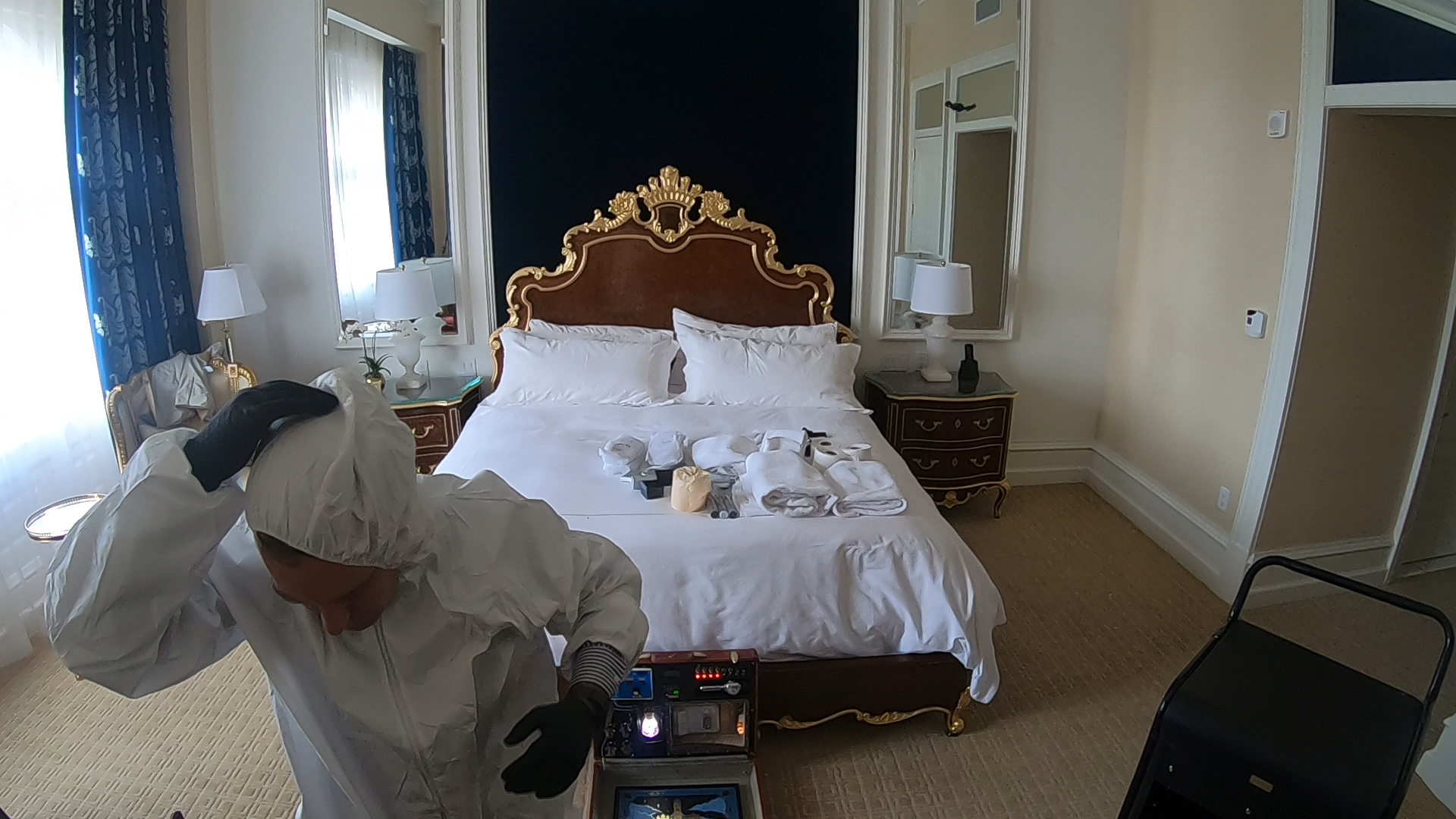
When White House Chief of Staff Mick Mulvaney appeared on Fox News and said that, at the end of the day, President Donald Trump “still considers himself to be in the hospitality business,” he was defending Trump’s decision to hold the Group of Seven summit at his own Florida resort. But he wasn’t just lending ammunition to Democrats accusing him of illegally profiting from his office. Mulvaney unwittingly alluded to a point of pride that is also a vulnerable spot: Trump is indeed still a hotelier, and bookings at his branded properties dipped as he intensified his political campaigning, according to the Washington Post.
A new project by New York artist Duke Riley, now on view at Pioneer Works in Brooklyn as part of the Performa performance biennial, offers a fictitious attack on that same flagging business. The work, Non-Essential Consultants, incorporates sculpture, video, and a creative riff on traditional stock offerings. The title refers to Essential Consultants, the name of the shell company formed by Trump’s fixer, Michael Cohen, to pay off porn star Stormy Daniels in violation of campaign finance laws.
It’s all based on a narrative in which the artist supposedly infested a Trump property with one of the world’s most detested insects: bedbugs. These hardy pests, which feed on human blood and can go a year without a meal, have long infested urban areas at frightening rates. And contrary to what you may think, they affect luxury homes and hotels as much as down-at-heel areas.
Still from In the Darkest Hour I am By Your Side (2019) in the installation Duke Riley: Non-Essential Consultants, Inc. at Red Hook Labs, 2019, presented by Pioneer Works as part of Performa 19.
The piece has a lot of moving parts. First, the sculpture: it consists of a vintage Samsonite suitcase which contains a tiny replica of a luxury hotel room. The room, according to the artist, represents “a notorious hotel located just blocks from the White House.” (One suspects that this just might be the infamous Trump International Hotel.) The apparatus is ostensibly a wee hotel room for bedbugs. It comes complete with a supply of carbon dioxide to attract the insects, which are drawn to human exhalations, drawing them to a little feeding container filled with human blood. When I saw it during a studio visit, there was a plastic tube holding little creatures that, from my extensive experience with the pests, sure looked a lot like bedbugs.
Still from In the Darkest Hour I am By Your Side (2019) in the installation Duke Riley: Non-Essential Consultants, Inc. at Red Hook Labs, 2019, presented by Pioneer Works as part of Performa 19.
Then there’s the video, which unfolds over three projections. In the center we see Riley, clad in a suit and a fedora, standing in a dark, disused industrial space. He receives the suitcase from an unseen party, and then pricks his own hand to draw blood. Elsewhere, the artist again appears, in a hazmat-style suit, infiltrating the hotel room with bedding carrying bedbugs he’s cultivated. At right, housekeeping staff removes the items, thus ensuring that the insects will be dispersed around the property.
The set design is very, very convincing, as you’ll see when you Google search images of the DC hotel.
In the end, the viewer has to ask if any of it, or all of it, is real. At a simulated stock offering at the show’s opening on Saturday night—attendees were asked to wear suits, to echo the look of Wall Street—Riley took some questions, in humorously cagey style:
Q: Does the video in this project depict people putting real bedbugs in a particular infamous hotel in Washington, DC?
Riley, unfurling a piece of paper from a jacket pocket: On the advice of counsel, the events depicted in this project are speculative dramatization and do not depict actual events.
Q: Where did you get the bedbugs?
Riley: Urban Wildlife is a recurring theme in my work. I am happy to answer any questions of an entomologic nature. If I were looking for bedbugs I would probably get them on a mattress on the street.
Stock Certificate from Duke Riley’s performance Non-Essential Consultants, Inc for Performa 2019.
Though the logistics of the piece—what happened? What didn’t?—remain ambiguous, it ends up being very clear what Riley is referring to. Critics argue that the Trump organization, campaign, and administration have all proven porous to spies, con men, and foreign adversaries, imperiling the integrity of American elections and undermining national security. The bedbugs aren’t only Riley’s supposed attack on Trump’s livelihood. They’re also a metaphor for the intrusions by Russia that are outlined in the Mueller Report; Riley even had an onstage guest answer one of the questions at the Q&A in Russian.
The “stock offering” component of the project offers partial ownership in Non-Essential Consultants; investors received certificates decorated with bedbugs following trails of blood. The skin-crawling IPO drove home another message: You, too, can be part of the insect #resistance.